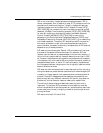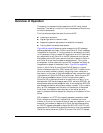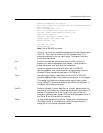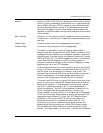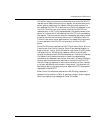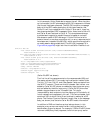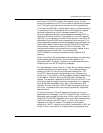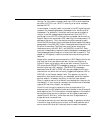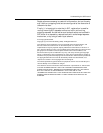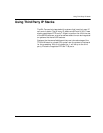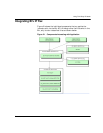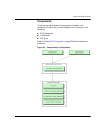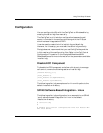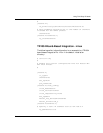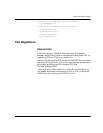
Understanding the SIP Protocol
November 2009 254
forking. For this reason, request handling in SIP is often classified
as either INVITE or non- INVITE, referring to all other methods
besides INVITE.
In some cases, it may be useful for proxies in the SIP signaling path
to see all the messaging between the endpoints for the duration of
the session. For example, if the biloxi.com proxy server wished to
remain in the SIP messaging path beyond the initial INVITE, it
would add to the INVITE a required routing header field known as
Record- Route that contained a URI resolving to the hostname or IP
address of the proxy. This information would be received by both
Caller B's SIP phone and (due to the Record-Route header field being
passed back in the 200 (OK)) Caller A's softphone and stored for the
duration of the dialog. The biloxi.com proxy server would then
receive and proxy the ACK, BYE, and 200 (OK) to the BYE. Each
proxy can independently decide to receive subsequent messages, and
those messages pass through all proxies that elect to receive it. This
capability is frequently used for proxies that are providing mid-call
features.
Registration is another common operation in SIP. Registration is one
way that the biloxi.com server can learn the current location of
Caller B. Upon initialization, and at periodic intervals, Caller B's
SIP phone sends REGISTER messages to a server in the biloxi.com
domain known as a SIP registrar. The REGISTER messages
associate Caller B's SIP or SIPS URI (sip:callerb@biloxi.com) with
the machine into which he is currently logged (conveyed as a SIP or
SIPS URI in the Contact header field). The registrar writes this
association, also called a binding, to a database, called the location
service, where it is used by the proxy in the biloxi.com domain.
Often, a registrar server for a domain is co-located with the proxy for
that domain. It is an important concept that the distinction between
types of SIP servers is logical, not physical.
Caller B is not limited to registering from a single device. For
example, both the SIP phone at home and the one in the office could
send registrations. This information is stored together in the location
service and allows a proxy to perform various types of searches to
locate Caller B. Similarly, more than one user is registered on a
single device at the same time.
The location service is just an abstract concept. It generally contains
information that allows a proxy to input a URI and receive a set of
zero or more URIs that tell the proxy where to send the request.



